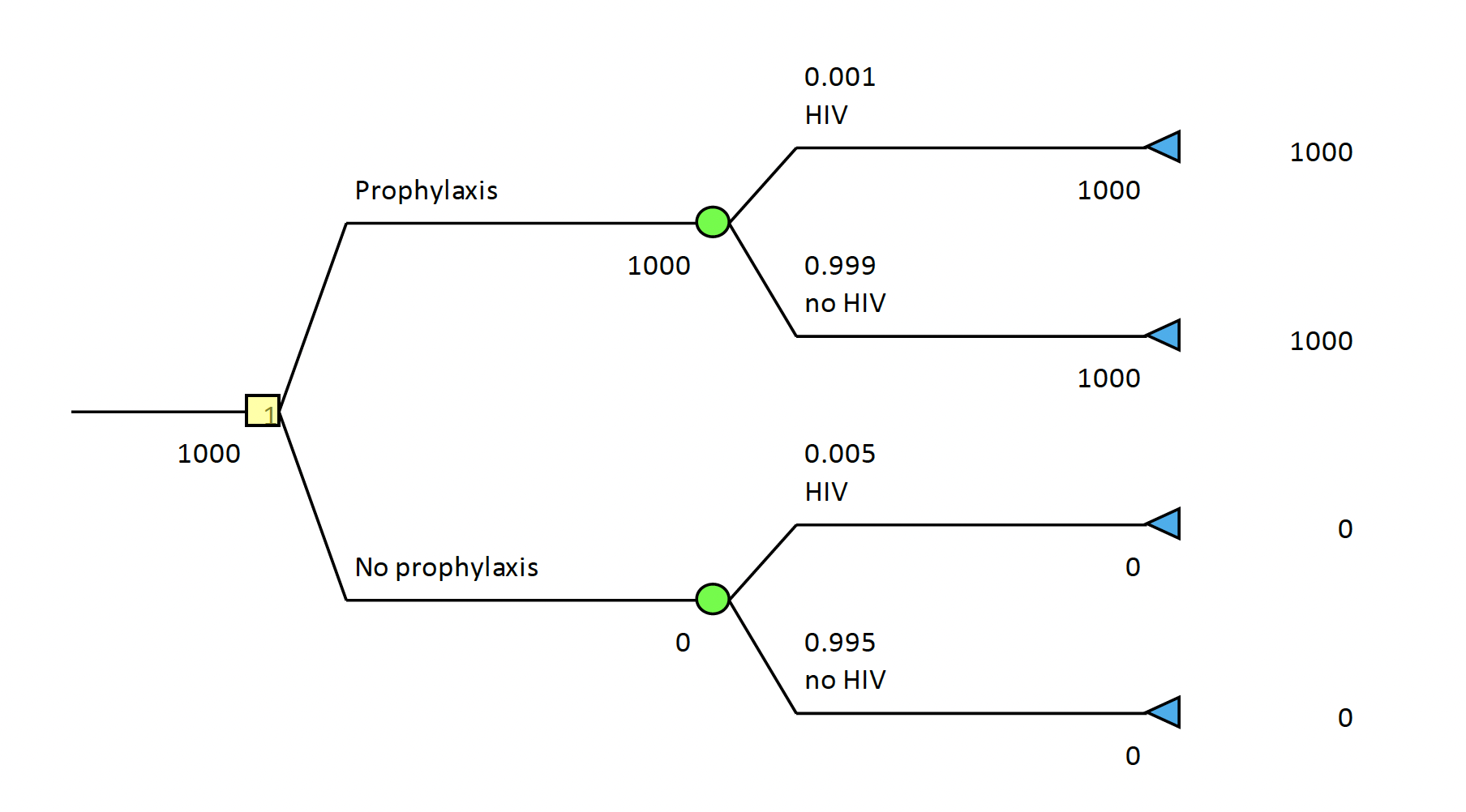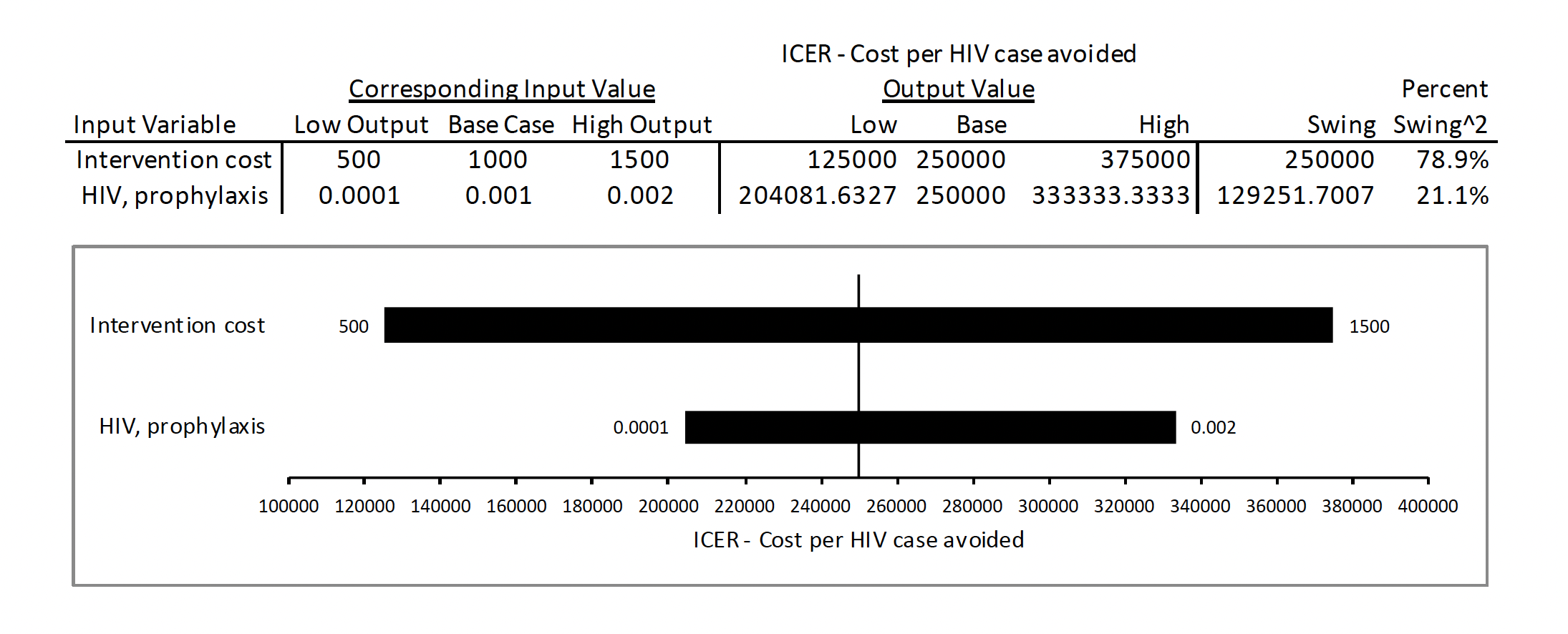8. Deterministic & Scenario Analysis
Learning Objectives and Outline
Learning Objectives
Explain the purpose of deterministic sensitivity analysis and provide examples of one-way versus two-way analyses.
Detail the advantages/disadvantages of deterministic sensitivity analysis.
Outline
- One-way sensitivity analysis.
- Examples from publications.
- Two-way sensitivity analysis.
- Examples from publications.
- Limitations and extensions.
- Scenario analysis
- Threshold analysis
One-way sensitivity analysis
One-way sensitivity analysis
- Usually the starting point for sensitivity analyses
- Sequentially testing one variable at a time (i.e., Age, BMI, QALY, other clinically important parameters), while holding everything else constant
- Determining how this variation impacts the results
- One-way sensitivity analyses are often presented in a tornado diagram
- Used to visually rank the different variables in order of their overall influence on the magnitude of the model outputs
A simple decision tree

A simple decision tree

A simple decision tree

Examples from publications
Rotavirus case study from Capstone

Rotavirus case study from Capstone

Rotavirus case study from Capstone

Other examples

Other examples

Other examples

Other examples

Two-way sensitivity analysis
Two-way sensitivity analysis
- A way to map the interaction effects between two parameters in a decision analysis model
- Varies 2 parameters at a time
- Explores the robustness of results in more depth
Examples from publications
HIV prevention

HIV prevention
Markov model examining strategies for HIV prevention among serodiscordant couples seeking conception (woman does not have HIV and male has HIV)
We know that if the male partner is consistently on medication for HIV (i.e., resulting in virologic suppression), then the risk of transmission is small regardless of the woman taking PrEP (pre-exposure prophylaxis)
And we also know that PrEP has traditionally been really costly
HIV prevention

Financial incentives for acute stroke care

Financial incentives for acute stroke care
Under pay for performance policies in the US, physicians or hospitals are paid more for meeting evidence-based quality targets
Study objective: Illustrate how pay-for-performance incentives can be quantitatively bounded using cost-effectiveness modeling, through the application of reimbursement to hospitals for faster time-to-tPA for acute ischemic stroke
Financial incentives for acute stroke care
When administered quickly after stroke onset (within three hours, as approved by the FDA), tPA helps to restore blood flow to brain regions affected by a stroke, thereby limiting the risk of damage and functional impairment
Financial incentives for acute stroke care

Limitations of deterministic sensitivity analyses
Caution: Limitations!
- Limited by the subjectivity of the choice of parameters to analyze
- That’s why we also run PSAs!, i.e., varying ALL input parameters at the same time, using priors to play a distribution around each value
Opportunity to practice in Exercise!
Scenario analysis
Scenario analysis
- Focuses more on model assumptions rather than parameter uncertainty
- Could include separate analysis on:
Subgroups/sub-populations, including different age cohorts & risk levels
Different perspectives (societal; modified societal; etc)
Scenario analysis
Hypothetical scenarios (“optimistic” and “conservative” scenarios; for example, if we have little evidence of long-term survival associated with medication X, we might have an optimistic versus conservative scenario)
Time horizons
Examples

Examples

Examples

Examples

Examples

Examples

Threshold analysis
Threshold analysis
- Answers the question: What the input parameter need be to meet the country thresholds of:
- $50,000/QALY gained
- $100,000/QALY gained
- $150,000/QALY gained
- $200,000/QALY gained
Examples

Examples
